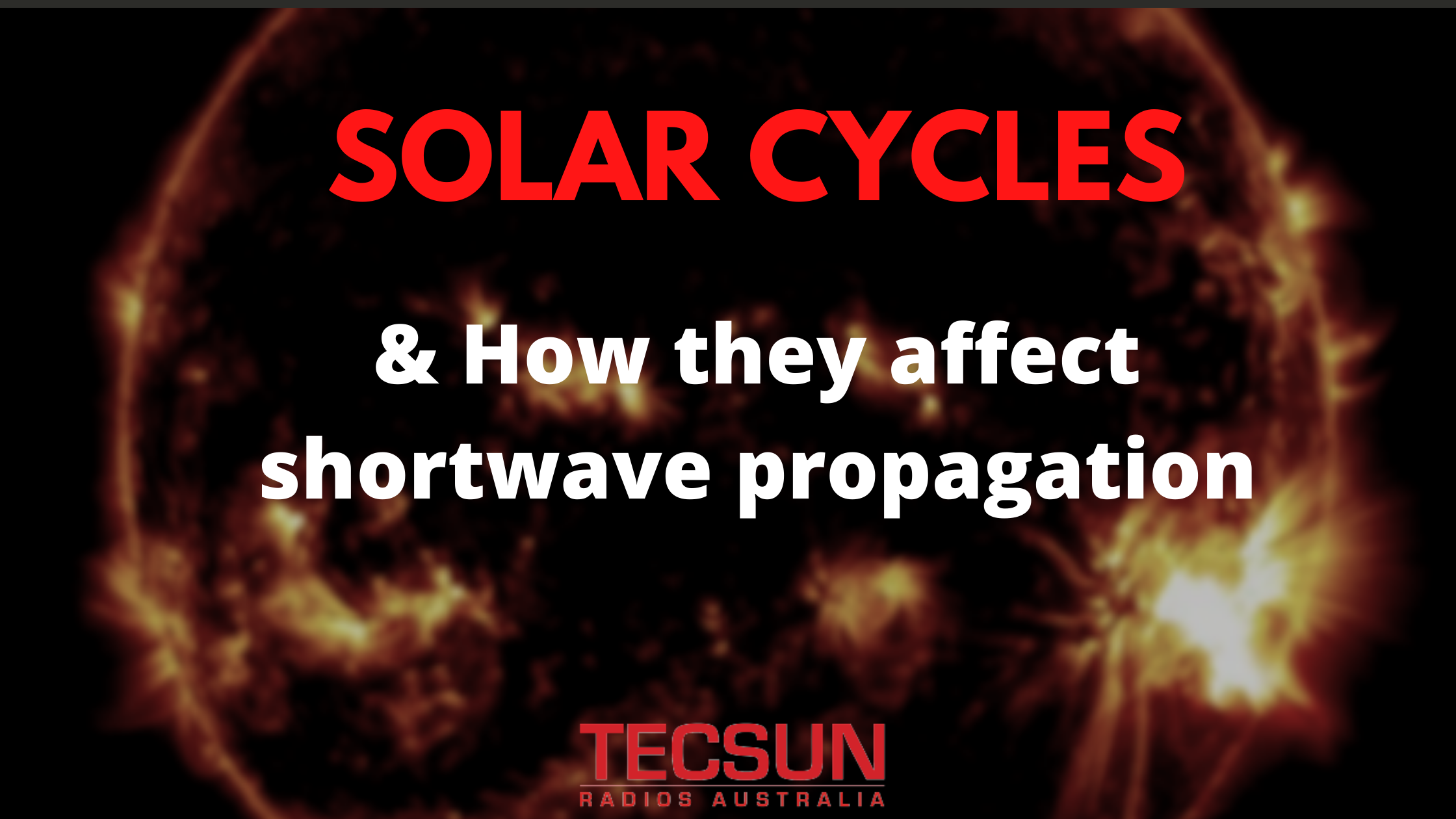
In 1843 the phenonema known as the Solar cycle was discovered by Samuel Schwabe a German astronomer who observed transitions of the Sun from periods of high activity to low activity every 11 years, over a period of nearly 20 years.
Put in simple terms, the Sun is composed of a huge ball of electrically charged hot gas. As this gas moves, it generates a powerful magnetic field. This magnetic field transitions through an 11 year cycle (known as the Solar Cycle) during which the magnetic poles of the Sun are transposed, ie the north and south poles change places.
This cycle affects activity on the surface of the Sun, such as sunspots and solar flares. The energy released by these events charges particles in the ionosphere, affecting radio propagation. More solar flares and sunspots occur at the peak of the cycle than at the bottom of the cycle. Typical values are 80-100 sunspots at the cycle peak and 15 or so at the cycle minimum.
When a strong flare occurs, the increased x-ray and extreme ultraviolet radiation produces ionisation in the lower, D (absorption) layer of the ionosphere, disrupting HF radio broadcasts by absorbing rather than reflecting signals.
We are currently at the end of Solar Cycle 24 (calculated as mid 2020), and from this point we can expect an increase in solar activity and changed radio propagation as the maximum useable frequency (MUF) for shortwave communications increases with an increase in solar activity.
At the peak of the Solar Cycle, the higher frequencies of the shortwave spectrum are very good. Low power stations can be heard over remarkably long distances.
At the bottom of the cycle, the current position, those higher frequency signals will not usually support normal propagation via the ionosphere. So propagation at lower frequencies will be better whilst higher frequencies will suffer.
Article written by Tecsun Radios Australia
Image of sun via Nasa.



Trackbacks & Pingbacks
[…] at lower frequencies will be better whilst higher frequencies will suffer. Full article CLICK Here […]
Leave a Reply
Want to join the discussion?Feel free to contribute!